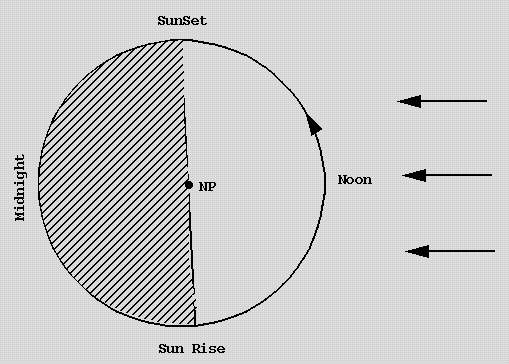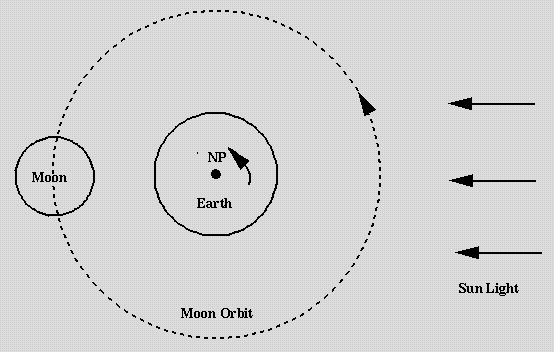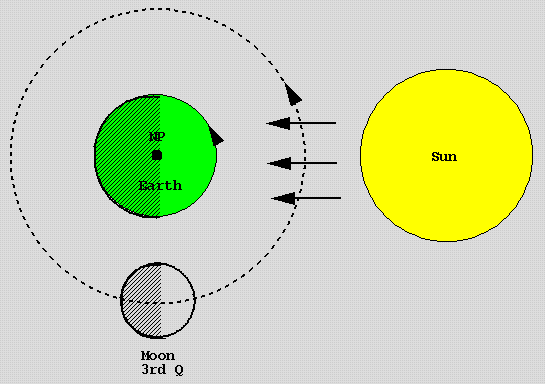Name: _________________________ Student Number: ________________ Name: _________________________ Student Number: ________________ Name: _________________________ Student Number: ________________
You will all get the same credit for the activity, but the main point is for you to learn something. To do this, you need to participate, or at least make sure (demand!) that you understand everything the other members of your group want to write down. (If they can't explain it to you, they don't understand it.)
If this grouping doesn't work well for you, remember to change it for the next time we do an in-class activity. If you are at all uncomfortable with group activities, you may be more comfortable with a single-gender group.
Each group should get a tennis ball.
1. Sketch the Earth, the light rays from the Sun, and clearly showing your locations (your eyes) at sunrise, sunset, noon and midnight. The viewpoint for the sketch is looking down from the North Pole. Show the direction in which the Earth is spinning.

The Scale Model of the Earth-Moon System: We selected your head and a tennis ball because: REarth = 6.4 x 103 km and the RMoon = 1.7 x 103km and this ratio, 3.8:1, is about the same as the ratio of the radius of your head to a tennis ball. To scale the distance between the Earth and the Moon in units of the Moon's radius, divide the distance between the two, 3.84 x 105 km, by the radius of the Moon. This = 226. So, if the radius of the tennis ball is 1.4 inches, about how far away should you hold the tennis ball for it to be to scale? Multiplying 1.4 in times 226 is about 316 inches or 26 ft.
2. Place the Earth (your head) and the Moon (tennis ball) in the proper
relative positions to the Sun so that the Moon's phase is full.
(a) Sketch the relative positions of the Earth, Moon and the Sun.
Show with an arrow the direction in which the Earth is spinning and the Moon
orbiting. The Moon orbits the Earth in the same direction that the Earth
spins. If the top of your head is the North pole, they orbit and spin to
the left (counter-clockwise).

(b) What time is it for you when the Full Moon is highest in the sky (that is, you are looking straight at it)?
Now have your partner hold the tennis ball representing the Moon in
the same place and turn yourself to the left until the ball is just about
to disappear from view, that is the Moon is about to set. Where is the
light representing the Sun?
(c) What time is it for you when the Full Moon sets?
3. Now, move the ball representing the Moon so that the Moon is at third
quarter.
(a) Sketch the relative positions of the Earth, Moon and the Sun.
Show with an arrow the direction in which the Earth is spinning and the
Moon orbiting.

(b) What time is it for you when the Third Quarter Moon is highest in the sky (you are looking straight at it)?
Have your partner hold the Moon in the same place. Turn yourself to
the left until you can just see the ball representing the Moon.
(c) What time is it for you when the Third Quarter Moon rises?
What is the phase of the Moon when there is a lunar eclipse?
When your group is done, the class as a whole will discuss the answers. Correct your answers if necessary, and then hand in your work as one final activity sheet for credit. (Staplers are available to assemble your cleanest set of answers.)